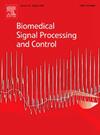Incremental modeling and its application for driver fatigue estimation
IF 4.9
2区 医学
Q1 ENGINEERING, BIOMEDICAL
引用次数: 0
Abstract
This article focuses on an Incremental Learning (IL)-based approach for examining a driver fatigue dataset and compares its performance with classical Machine Learning (ML) and deep learning techniques with respect to generalization capability. Driver fatigue is of significant concern in traditional driving conditions, contributing to many serious and fatal accidents worldwide. While self-driving cars may eventually alleviate this issue, until they are fully developed, “self-driving carsickness” introduces new problems. Various classification methods have been proposed in recent years to distinguish between drowsy and alert states, including both binary and multi-class classifications. However, the generalization capabilities of these methods are underexplored. IL, often seen as a data-hungry approach, optimizes both model parameters and structure. The primary goal is early recognition of fatigue, enabling timely intervention, and ensuring explainability for safety-critical systems. To address these issues, we propose a novel regression approach. We propose a deterministic regression model, guided by binary labels and using an Incremental Modeling (IM) framework, to address the challenges in fatigue recognition. Our model demonstrates superior performance on a challenging dataset, with improvements in accuracy (), parameter count (), speed ( s), and latency (). It also offers flexibility with optional personalization, illustrating the strength and adaptability of IM for fatigue detection in various conditions.

增量建模及其在驾驶员疲劳估计中的应用
本文重点研究了一种基于增量学习(IL)的方法,用于检查驾驶员疲劳数据集,并将其性能与经典机器学习(ML)和深度学习技术在泛化能力方面进行了比较。驾驶员疲劳是传统驾驶条件下的重要问题,在世界范围内造成了许多严重和致命的交通事故。虽然自动驾驶汽车最终可能会缓解这一问题,但在它们完全开发出来之前,“自动驾驶晕车”会带来新的问题。近年来提出了多种区分困倦和清醒状态的分类方法,包括二元分类和多类分类。然而,这些方法的泛化能力尚未得到充分的探索。IL通常被视为一种需要大量数据的方法,它可以优化模型参数和结构。主要目标是早期识别疲劳,及时干预,并确保安全关键系统的可解释性。为了解决这些问题,我们提出了一种新的回归方法。我们提出了一种确定性回归模型,以二元标签为指导,使用增量建模(IM)框架,以解决疲劳识别中的挑战。我们的模型在具有挑战性的数据集上表现出优异的性能,精度(+2…+7%),参数计数(- 99…- 100%),速度(+0.5…- 0.1 s)和延迟(- 70μs)都有提高。它还提供了可选的个性化灵活性,说明了IM在各种条件下进行疲劳检测的强度和适应性。
本文章由计算机程序翻译,如有差异,请以英文原文为准。
求助全文
约1分钟内获得全文
求助全文
来源期刊

Biomedical Signal Processing and Control
工程技术-工程:生物医学
CiteScore
9.80
自引率
13.70%
发文量
822
审稿时长
4 months
期刊介绍:
Biomedical Signal Processing and Control aims to provide a cross-disciplinary international forum for the interchange of information on research in the measurement and analysis of signals and images in clinical medicine and the biological sciences. Emphasis is placed on contributions dealing with the practical, applications-led research on the use of methods and devices in clinical diagnosis, patient monitoring and management.
Biomedical Signal Processing and Control reflects the main areas in which these methods are being used and developed at the interface of both engineering and clinical science. The scope of the journal is defined to include relevant review papers, technical notes, short communications and letters. Tutorial papers and special issues will also be published.
 求助内容:
求助内容: 应助结果提醒方式:
应助结果提醒方式:


